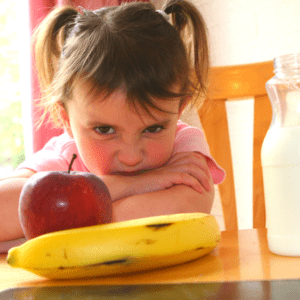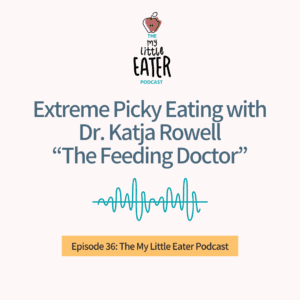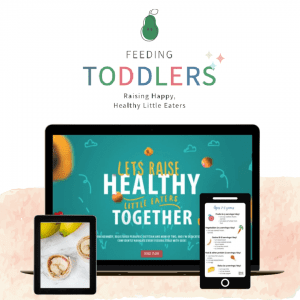
It seems like for most, there’s always at least one picky eater in the family. In fact, about 50% of kids, particularly in North America, will be described as picky eaters at some point or another. And what that means can be totally different for each family.
‘Cause you see, picky eating is a spectrum. For some, their child eats a variety of foods but is extremely particular about how that food is served. For others, their diet is limited to food of one particular type (mostly white foods, mostly dairy products, mostly soft textured or meltable foods, etc.). While for others still, it’s more about the fact that it’s limited to a handful of foods (even though they span a spectrum of food groups).
For most picky eaters, there are a few solid and key strategies that can be implemented that help take that child from picky to normal to average, to even an adventurous eater over time. In other words, they grow out of it with a little help, time, and patience.
What Does the Research Say?
However, research shows that about 1 in 10 kids have persistent or extreme picky eating. For the extreme picky eater, some more long term and deep intervention may be required.
Dr. Katja Rowell, author of the book “Helping Your Child Overcome Extreme Picky Eating” considers a child an extreme picky eater if: “…your child’s eating is affecting his social, emotional, or physical development and causing family conflict or worry…”. (Listen to my epic podcast interview with Dr. Rowell to get all the good tips).

What Does Picky Eating Look Like?
This usually looks like a child who doesn’t eat enough variety or amount of food to the point where they’re not growing, and maybe even losing weight. They are very anxious, sometimes not able to eat outside of the home, or are causing excess anxiety for the parent, which can be very overwhelming at mealtimes for the entire family. You’ll usually see a lot of power struggles between a child and their parent early on, which unfortunately, is one of the big risk factors for things getting even worse.
You may also notice the following:
- They have less than about 20 safe foods (foods they can consistently eat). There will always be certain days they don’t feel like eating a food they previously liked, but if they don’t generally have a consistent set of at least 20 foods they’ll eat, or are dropping foods from their repertoire quickly, they can be considered an extreme picky eater.
- They may avoid certain groups of foods (foods of one colour, texture, food group, etc.)
- They may have an inability to swallow, chew, handle certain textures (for example, a 12 month old only taking purees/pouches)
- They gag/vomit at the sight of food or interaction with a food. Sometimes they can tolerate it on the table or plate, but may gag as soon as they touch it or have to put it in their mouth.
- They are distressed with eating in general. Whether that means anxiety coming to the table, battles and pushback, crying, or tantrums when a food is presented that they don’t like.
- As mentioned above, they may be losing weight/significantly falling off the growth curve.
Now, although kids with extreme picky eating need more of an intervention and will likely take a lot more work and time to reverse things, it doesn’t necessarily mean they need feeding therapy. There’s a lot of children that can get assistance solely through their parents getting educated on how to support their child at mealtimes, offer a variety of food, deal with mealtime stress and behaviours, and encourage new eating behaviour. This is exactly the kind of thing my Feeding Toddlers course covers. In fact, the strategies covered in the course are precisely the same ones we would use to prevent, or significantly minimize, kids from getting to that point in the first place. They’re also heavily based on feeding therapy techniques, and take you through a step-by-step process to work on your child’s picky eating using a holistic approach. If your child needs extra one-on-one support with a feeding therapist, the course works very well alongside individualized programs and reinforces everything learned in therapy, but in a home environment.
One last thing to mention.
Whether your child is deemed an “extreme picky eater” or a “typical picky eater”…if all your energy goes into trying to get food into your child, seek out some help. For yourself, if not for any other reason. This is an extremely hard thing to cope with, and it can take a toll on your relationship with your child, your mental health, and the dynamics of the entire family. You should never have to deal with it alone and as always, if you need help, I’m here for you.
Xx
Edwena






